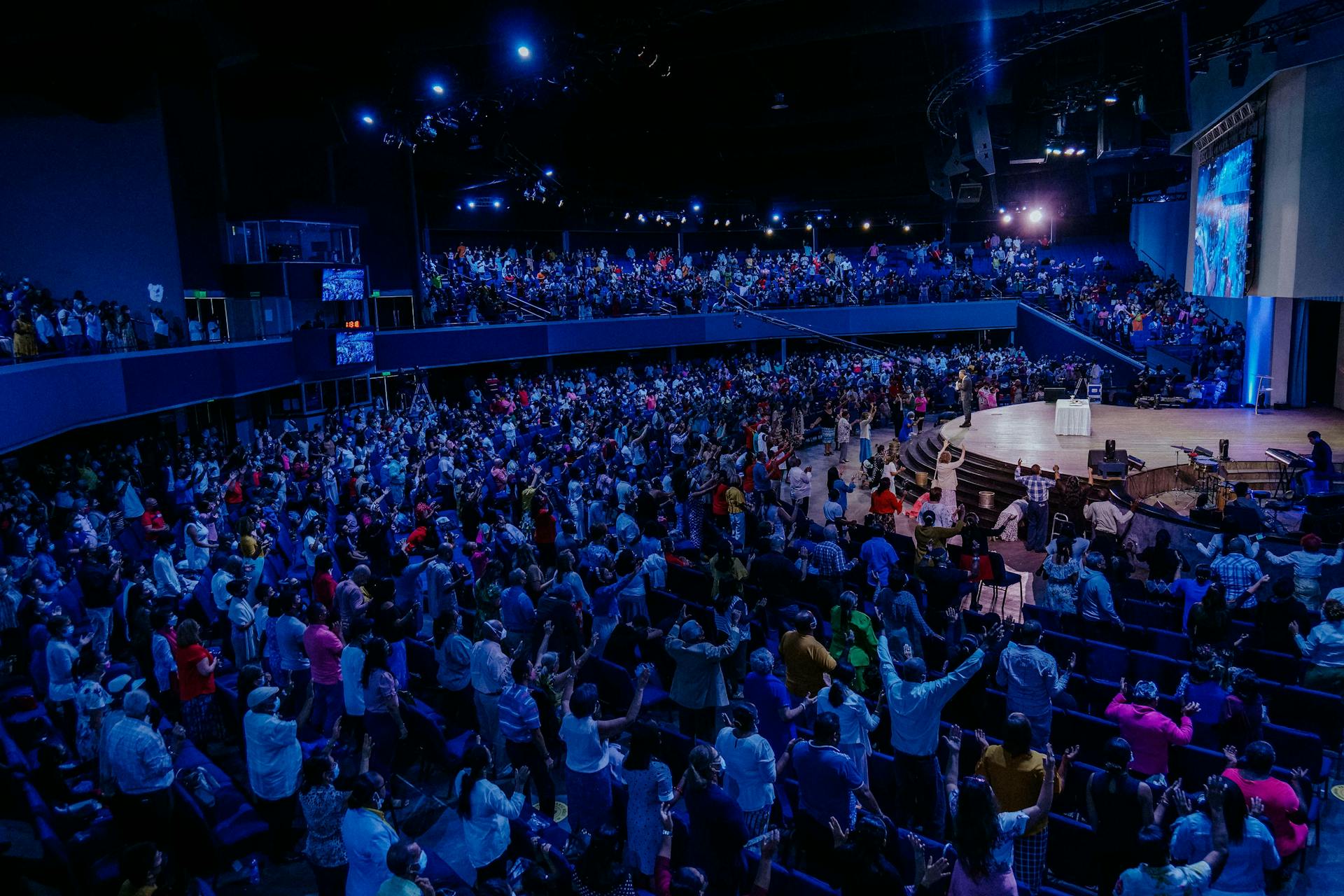
Before applying for a housing loan, it's essential to understand the process and what to expect. A housing loan is a type of loan specifically designed for purchasing or building a home.
To begin the application process, you'll need to provide personal and financial information, including your income, employment history, and credit score. This information will help lenders determine your creditworthiness and ability to repay the loan.
The loan application process typically takes several weeks to several months to complete, depending on the lender and the complexity of the application.
Once your loan is approved, you'll need to review and sign the loan agreement, which outlines the terms and conditions of the loan, including the interest rate, repayment period, and monthly payments.
For more insights, see: Housing Loan Procedure
Calculating Housing Loan Payments
A 20% down payment is desirable because it allows you to avoid private mortgage insurance (PMI), which increases your monthly payments. You can use a mortgage calculator to compare different mortgage types and lenders.

The main factors determining your monthly mortgage payments are the size and term of the loan. Generally, the longer your term, the lower your monthly payment.
A mortgage calculator can help you estimate your monthly mortgage payment, including principal, interest, taxes, and private mortgage insurance (PMI). You can adjust the home price, down payment, and mortgage terms to see how your monthly payment will change.
For most borrowers, the total monthly payment includes other costs, such as homeowner's insurance and taxes, which are held in an escrow account until they are due.
Here's a breakdown of the costs included in your monthly mortgage payment:
- Principal: the amount you borrowed to purchase the home
- Interest: the amount the lender charges for lending you the money
- Escrow Account Payment: includes homeowner's insurance, property taxes, and PMI (if applicable)
The formula for calculating your monthly mortgage payment is:
Monthly mortgage payment = Principal + Interest + Escrow Account Payment
The costs included in your escrow account are:
- Homeowners Insurance
- Property Taxes
- PMI (if applicable)
A larger down payment can significantly impact your monthly mortgage payment. For example, a 20% down payment on a $200,000 home can save you $201 per month compared to a 10% down payment.
Understanding Loan Options

A 20% down payment is desirable for a mortgage, as it eliminates the need for private mortgage insurance (PMI), making monthly payments lower.
The main factors determining your monthly mortgage payments are the size and term of the loan. Generally, the longer your term, the lower your monthly payment.
Conventional loans, backed by private lenders, often have strict requirements around credit score and debt-to-income ratios. They usually offer lower interest rates without PMI, but may require PMI with less than a 20% down payment.
A fixed rate loan keeps your interest rate the same for the entire loan term, while an adjustable rate loan resets to a new interest rate on scheduled intervals. A 5-year ARM, for instance, offers a fixed interest rate for 5 years and then adjusts each year.
Explore further: Online Personal Loans with Monthly Payments
Conventional
Conventional loans are backed by private lenders, like a bank, rather than the federal government. They often have strict requirements around credit score and debt-to-income ratios.

If you have excellent credit with a 20% down payment, a conventional loan may be a great option, as it usually offers lower interest rates without private mortgage insurance (PMI).
You can still obtain a conventional loan with less than a 20% down payment, but PMI will be required. This means your monthly payments will be higher.
Conventional loans are a good choice for those who can manage a 20% down payment and have a good credit score. It's a way to save money on interest rates and avoid PMI.
However, if you're struggling to come up with a 20% down payment, you may need to consider other options, like government-backed loans.
Additional reading: Will Lender Accept If a Friend Gift Money Conventional Loan
Government
Government loan options offer more flexibility for borrowers. FHA loans are government-backed and insured by the Federal Housing Administration, allowing for lower credit score requirements and smaller down payments.
FHA loans come with mandatory mortgage insurance that lasts for the life of the loan. VA loans, on the other hand, are partially backed by the Department of Veterans Affairs, making it possible for eligible veterans to purchase homes with zero down payment in most cases.
VA loans offer competitive interest rates and eliminate the need for private mortgage insurance (PMI). However, VA loans do require a funding fee.
Readers also liked: Commercial Mortgage Backed Securities Loans
Fixed Rate vs Adjustable Rate
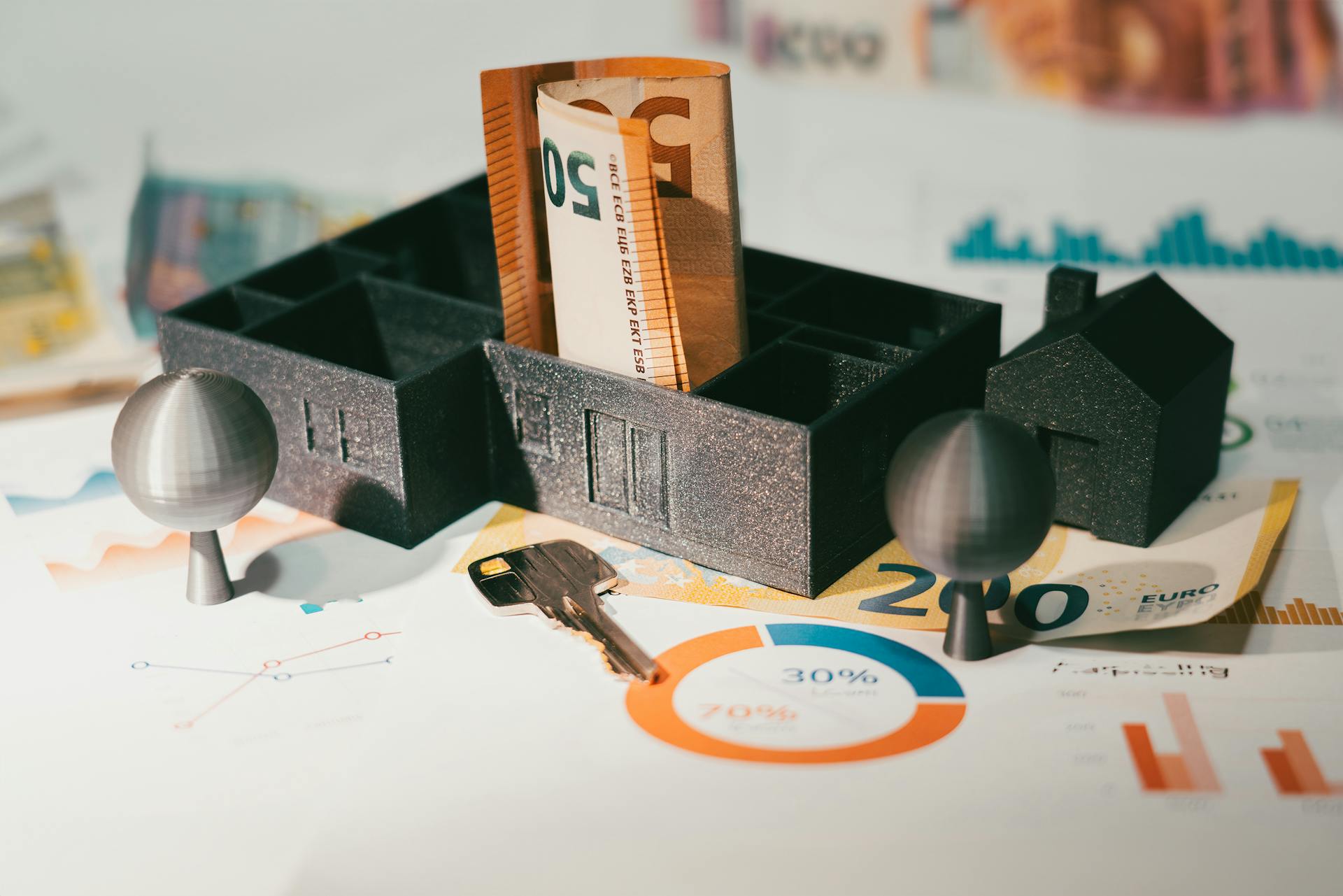
A fixed rate is when your interest rate remains the same for your entire loan term. This can be beneficial if you plan to keep your mortgage for the long haul.
A fixed rate mortgage is often a good choice for those who want predictable monthly payments. This is because the interest rate won't change, so you'll always know exactly how much you owe each month.
An adjustable rate mortgage, on the other hand, stays the same for a predetermined length of time and then resets to a new interest rate on scheduled intervals. This can be a good option for those who plan to refinance or move before the first rate adjustment.
A 5-year ARM, for instance, offers a fixed interest rate for 5 years and then adjusts each year for the remaining length of the loan. The first fixed period often offers a low rate, making it beneficial if you plan to refinance or move before the first rate adjustment.
Expand your knowledge: Mortgage 40 Year
Loan Components and Costs
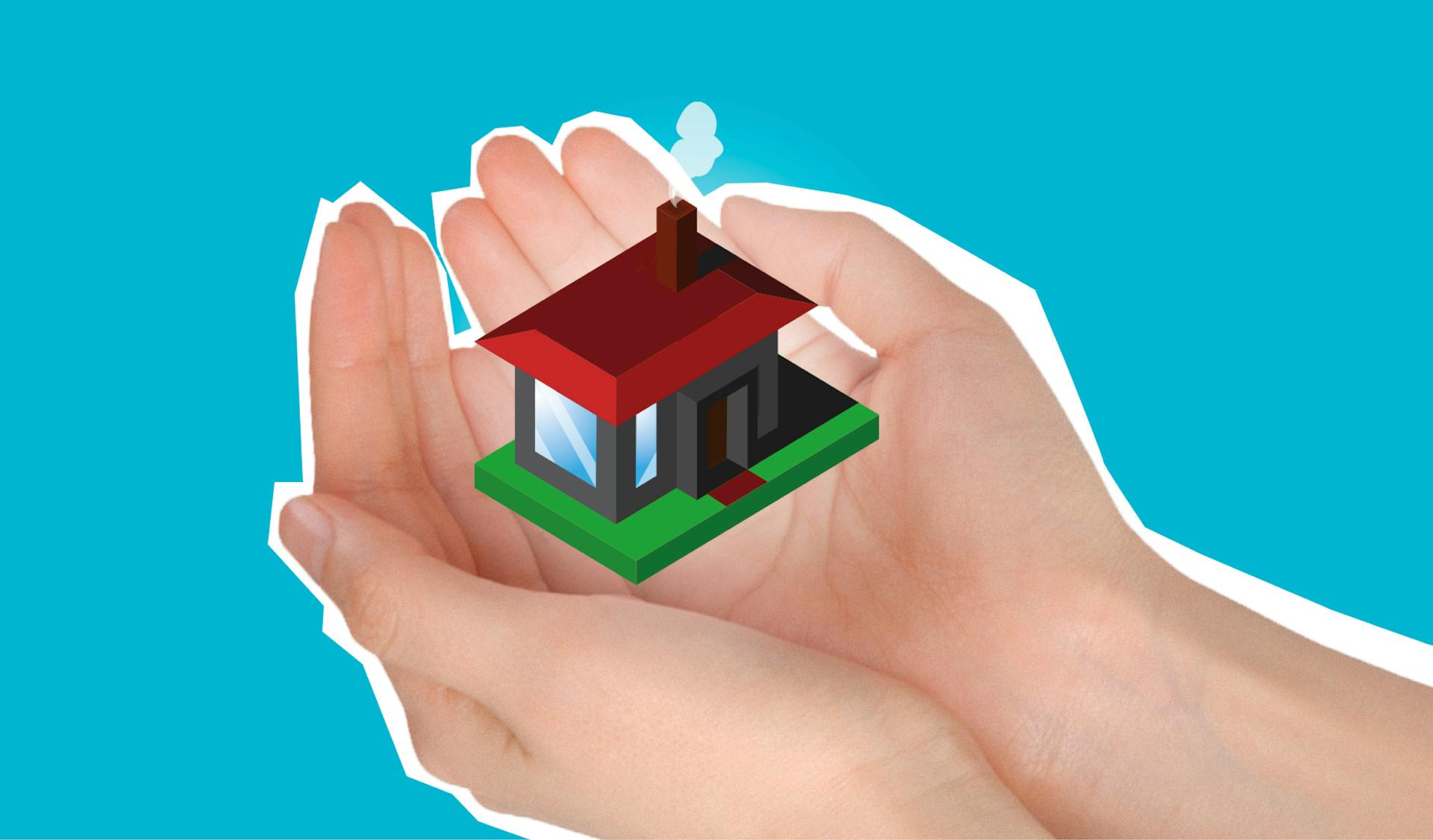
A mortgage typically includes four key components: loan amount, down payment, loan term, and interest rate. A loan amount is the amount borrowed from a lender or bank, which is usually the purchase price minus any down payment.
The down payment is the upfront payment of the purchase, usually a percentage of the total price, and it's recommended to put 20% or more to avoid paying private mortgage insurance (PMI). If you make a down payment of less than 20%, you'll be required to pay PMI until the loan's remaining principal drops below 80% of the home's original purchase price.
A loan term is the amount of time over which the loan must be repaid in full, with most fixed-rate mortgages being for 15, 20, or 30 years. The interest rate is the percentage of the loan charged as a cost of borrowing, and it can be fixed or adjustable.
On a similar theme: A Monthly Fixed Rate Mortgage Payment
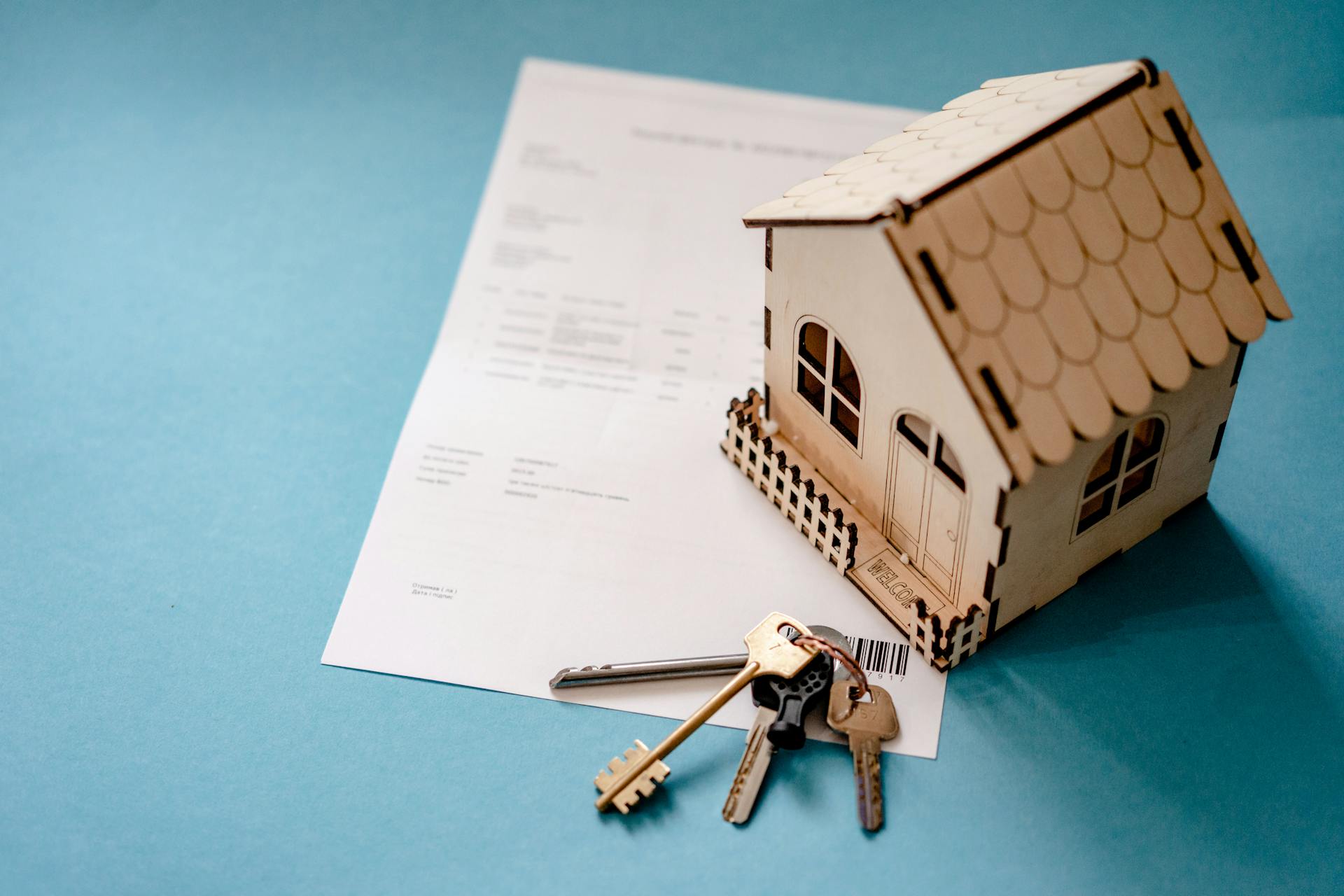
Here's a breakdown of the costs included in your monthly mortgage payment:
Piti: Components
A mortgage payment is made up of four key components: principal, interest, taxes, and insurance (PITI).
The principal is the loan amount borrowed from a lender or bank, which is the purchase price minus any down payment.
Interest is the additional money owed to the lender that accrues over time as a percentage of the initial loan.
Taxes are typically paid through an escrow account, which is managed by the lender to pay property tax bills.
Insurance is also paid through an escrow account, which covers homeowners insurance and, in some cases, private mortgage insurance (PMI).
The combination of these four components makes up the total monthly mortgage payment.
Here's a breakdown of the costs included in a monthly mortgage payment:
Funding Fee
The funding fee is a governmental fee paid to the Department of Veterans Affairs to help keep the VA loan program running for years to come.
The VA funding fee ranges from .5 to 3.3 percent. It's a significant cost, but not every borrower is required to pay it.
The funding fee is calculated based on the loan amount and other factors, but the exact amount is determined by the Department of Veterans Affairs.
Related reading: Mortgage Arrangement Fee
Amortization and Repayment
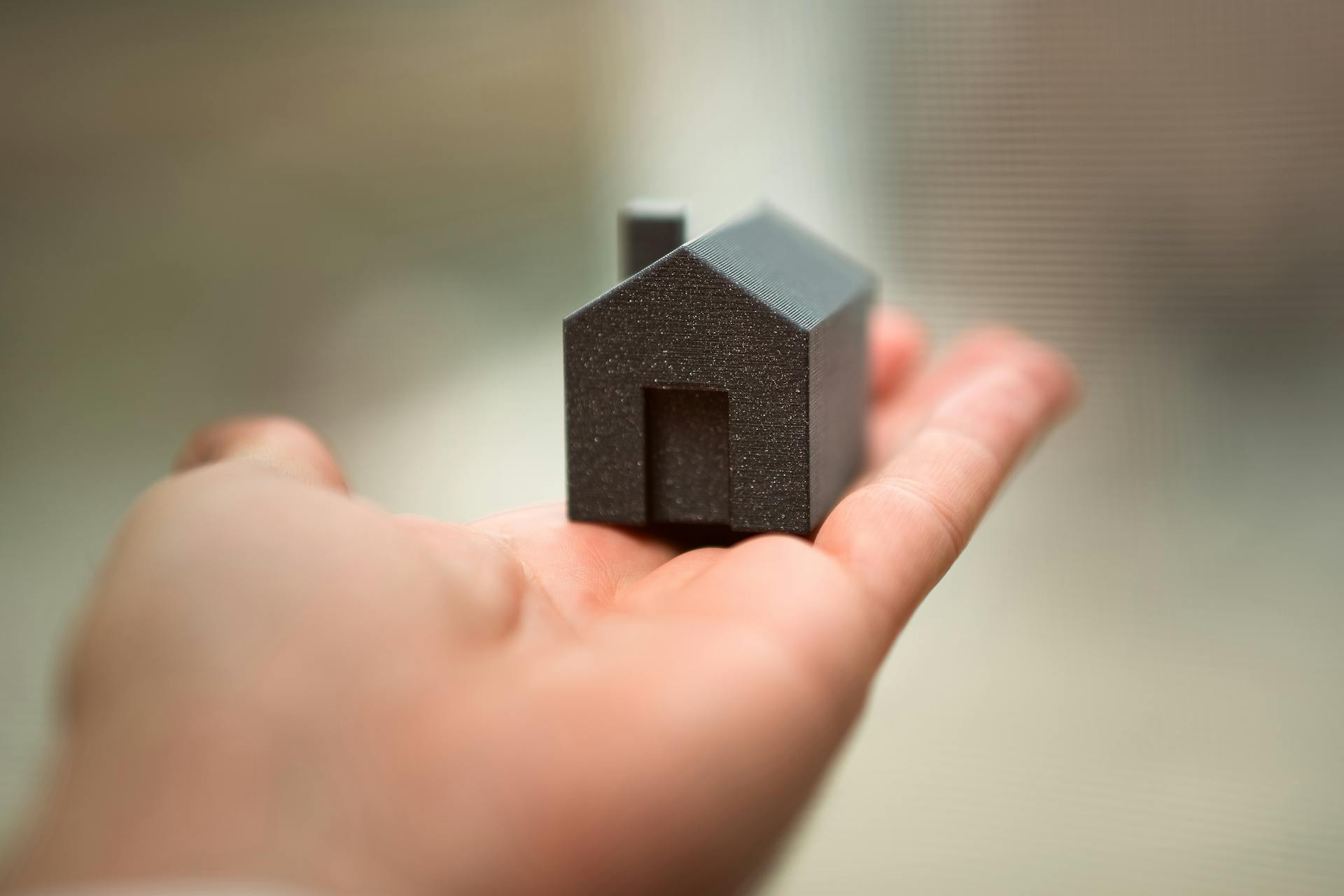
An amortization schedule is a breakdown of your monthly mortgage payments over the life of the loan, showing how much of each payment goes toward interest and principal. It's like a roadmap to paying off your mortgage, helping you understand how your payments work.
A mortgage's amortization schedule typically starts with high interest payments and gradually shifts to more principal payments over time. For example, in a 30-year mortgage, the first year's payments consist mostly of interest, while later payments are mostly principal.
The amount dedicated to principal and interest changes with each payment, as shown in the example schedule below:
This schedule shows how the balance between principal and interest payments reverses over time, moving toward greater application to the principal.
You might enjoy: Principal Reduction
The Amortization Schedule
The Amortization Schedule is a detailed breakdown of your mortgage payments over the life of the loan. It shows how much of each payment goes toward the principal and interest.
As you can see from the example of a $100,000, 30-year mortgage, the amortization schedule has 360 payments. The partial schedule demonstrates how the balance between principal and interest payments reverses over time, moving toward greater application to the principal.
Here's a breakdown of the first few payments:
The chart shows that each payment is $599.55, but the amount dedicated to principal and interest changes. At the start of your mortgage, the rate at which you gain equity in your home is much slower. This is why it can be good to make extra principal payments if the mortgage permits you to do so without a prepayment penalty.
In fact, making extra principal payments can reduce your principal, which in turn reduces the interest due on each future payment. This can help you pay off the mortgage faster and save money on interest over time.
For example, a $200,000 fixed-rate, 30-year mortgage with a $920.57 monthly payment will have the following breakdown of principal and interest over time:
As you can see, the amount dedicated to principal increases over time, while the amount dedicated to interest decreases. This is a key part of understanding how your mortgage payments will work over the life of the loan.
When Do They Start?
Mortgage payments begin on the first of the month after you have lived in the home for 30 days.
If you buy a home in October, your first payment on your mortgage will be due on December 1, even if you purchased your home on October 1 or October 31.
This rule applies to everyone, regardless of the day of the month you close on your home.
Financial Considerations
A mortgage is a loan secured by property, usually real estate property, where a lender helps the buyer pay the seller of a house. The buyer agrees to repay the money borrowed over a period of time, usually 15 or 30 years.
Most people in the U.S. use mortgages to own homes, with the conventional 30-year fixed-interest loan being the most common, representing 70% to 90% of all mortgages.
The monthly payment for a mortgage includes both principal and interest, with a portion going towards paying off the original amount borrowed and the other towards the cost of using the lender's money.
Intriguing read: Usda Home Loan First-time Buyer
Taxes
Taxes are assessed by government agencies and used to fund public services such as schools, police forces, and fire departments.
You can pay taxes as part of your monthly mortgage payments, and the amount due is divided by the total number of monthly mortgage payments in a given year.
The lender collects these payments and holds them in escrow until the taxes have to be paid.
Your estimated annual property tax is based on the home purchase price, and the total is divided by 12 months.
If you know the specific amount of taxes, you can add it as an annual total to your property taxes.
Explore further: Mortgage Loans Based on Bank Statements Not Taxes
Home Ownership Costs
Home ownership costs can be overwhelming, but understanding what you're getting into can help you prepare.
A mortgage is a loan secured by property, usually real estate property, and the buyer agrees to repay the money borrowed over a period of time, usually 15 or 30 years in the U.S.
Additional reading: A Conventional Mortgage Usually Has
The monthly mortgage payment includes the principal, which is the original amount borrowed, and the interest, which is the cost paid to the lender for using the money. The interest rate can impact the monthly payment significantly.
Your monthly mortgage payment also includes an escrow account payment, which covers the cost of property taxes and insurance. This means the bill you receive each month for your mortgage includes not only the principal and interest payment but also homeowners insurance, property taxes, and in some cases, private mortgage insurance and homeowners association fees.
The 28/36 rule, or debt-to-income (DTI) rule, suggests that your mortgage payment shouldn’t go over 28% of your monthly pre-tax income and 36% of your total debt. This ratio helps your lender understand your financial capacity to pay your mortgage each month.
Here are some recommended minimum savings to consider:
Calculating your closing costs, down payment, property taxes, and other expenses can help you determine how much house you can afford.
Lowering Monthly Expenses
Extending the loan term can lead to smaller monthly payments, but it means paying the loan off in a longer amount of time. This is because you're spreading the cost over a greater number of years.
You can expect a 30-year mortgage loan to have lower monthly payments compared to a 15-year mortgage, which is paid off in a compressed amount of time.
Buying a more affordable home is another route to a lower monthly payment. The higher the home price, the higher your monthly payments will be.
A 20% down payment can save you from paying private mortgage insurance (PMI), which adds to your monthly costs. Buying a home for a lower price or waiting until you have a larger down payment can help you avoid these extra payments.
Shopping around with other lenders can help you find a lower interest rate, which significantly impacts your monthly payments. Try to find the lowest interest rate available to you to keep your monthly mortgage payments as low as possible.
Here are four common ways to lower your monthly mortgage payments:
- Choose a long loan term
- Buy a less expensive house
- Paying a larger down payment
- Find the lowest interest rate available to you
Loan Types and Terminology
A 20% down payment is desirable, mostly because if your down payment is less than 20%, you are required to take out private mortgage insurance (PMI), making your monthly payments higher.
The main factors determining your monthly mortgage payments are the size and term of the loan. Generally, the longer your term, the lower your monthly payment.
A 30-year fixed-rate mortgage is the most popular option, but if you're planning on moving in a few years or flipping the house, an ARM can potentially offer you a lower initial rate.
Take a look at this: Lower You Mortgage Interest Rates
USDA (Government)
USDA loans are backed by the United States Department of Agriculture and are designed for low-income borrowers purchasing homes in eligible, rural areas.
These loans have loose credit requirements, making them more accessible to those with less-than-perfect credit.
Jumbo (Non-Conforming)
Jumbo (Non-Conforming) loans are named based on the size of the loan, exceeding the conforming loan limit set by the government.
Suggestion: Conforming Loan Amount Increase
These loans allow you to purchase more expensive properties, but often require 20% down, which can cost more than $100,000 at closing.
Rates for jumbo loans are competitive, making them a viable option for those looking to finance a larger home.
Loan limits for jumbo loans change annually and are specific to the local market, so it's essential to research the current limits in your area.
Jumbo loans are not insured by the Federal government, which can impact the terms and conditions of the loan.
Curious to learn more? Check out: Usda Home Loan Maximum Income
Options and Terminology
A 20% down payment is desirable because it means you won't have to take out private mortgage insurance (PMI), which can increase your monthly payments.
Mortgage rates are frequently mentioned on the evening news and can greatly impact your monthly payments.
The modern mortgage was created in 1934 to help people overcome the Great Depression by allowing lower down payments.
The size and term of the loan are the main factors determining your monthly mortgage payments.
A 30-year mortgage is the most popular option because it has lower monthly payments due to its longer term.
Mortgage programs with lower down payments are available, but a 20% down payment is still the most desirable option if you can manage it.
Compare Types
With so many loan options available, it can be overwhelming to decide which one is right for you. Let's break down the main types of loans and what sets them apart.
A 20% down payment is generally considered desirable, as it eliminates the need for private mortgage insurance (PMI), which increases your monthly payments.
The size and term of the loan are the main factors determining your monthly mortgage payments. The longer your term, the lower your monthly payment, which is why 30-year mortgages are the most popular.
A 30-year fixed-rate mortgage has a lower monthly payment, but you'll pay more in interest over time. A 15-year fixed-rate mortgage has a higher monthly payment, but you can save thousands in interest over the life of the loan.
Here's a comparison of the most common loan terms:
If you're planning on moving in a few years or flipping the house, an ARM can potentially offer you a lower initial rate. However, an ARM's interest rate will change after an initial fixed-rate period, which can increase or decrease depending on the economic climate.
For more insights, see: What Do Balloon Mortgage and Arm Have in Common
Frequently Asked Questions
How much is the house payment on $200 K?
For a $200,000 mortgage, your monthly payment would be approximately $1,199, but the actual cost depends on the loan term and interest rate.
What is a home loan payment?
A home loan payment typically consists of multiple components, including the loan principal, interest, taxes, insurance, and potentially mortgage insurance, which can be complex and surprising for first-time homebuyers. Understanding these components is crucial to managing your monthly mortgage expenses effectively.
Featured Images: pexels.com

